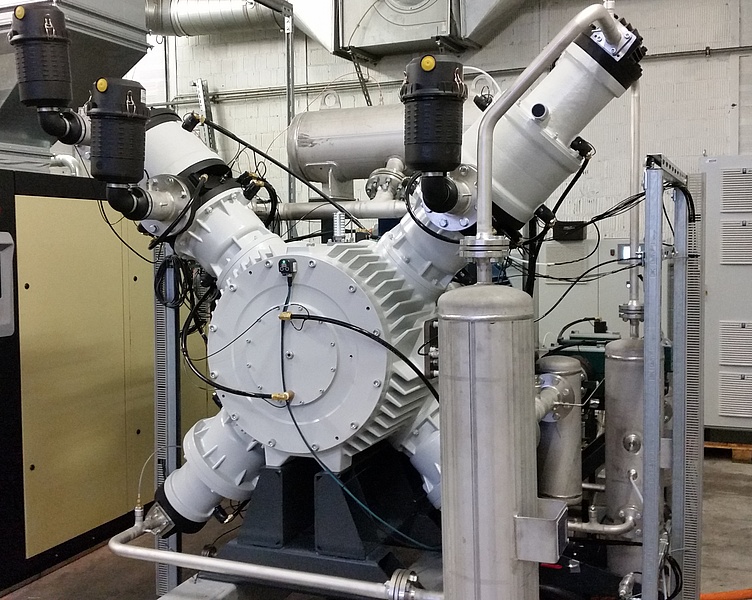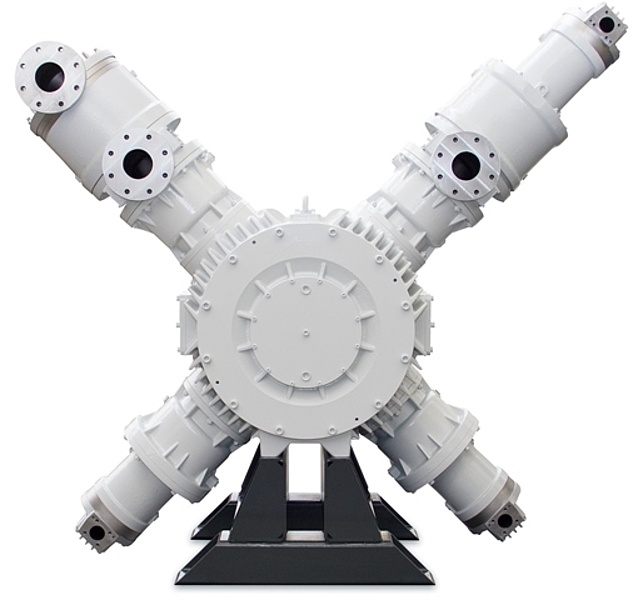The HAUG.Titan type was presented for the first time to the public in 2015 at the industrial fairs in Hanover and Frankfurt. The HAUG.Titan is based on the proven compressor concept of HAUG.Sirius with a magnetic coupling. The compressor has a star arrangement with 4 cylinders. The features are like the prooven design of HAUG.Sirius – completely oil-free and dry running.
The compressors with magnetic coupling are a HAUG Sauer development, which compress any gas without leakage. This hermetically gas-tight and absolutely free from wear drive was used for the first time by HAUG piston compressor in 1989.
The modular HAUG.Titan compressor concept allows highly customized and cost-effective adaptation of the compressor configuration to customer requirements. This allows development of technically, commercially and energetically optimised solutions.



Features
- Complete oil-free piston compressor
- Gas-tight design with magnetic coupling
- HAUG.Titan compressor block leak rate < 0.001 mbar l/s
- Water-cooled
- Motor power from 37 to 110 kW
- Rotary speed range 450 to 900 1/min
- Suction pressure max. 16 bar
- Final discharge pressure max. 100 bar
- Modular cylinder configuration with cylinder diameter up to 260 mm
- Single and double acting cylinders
- 1-, 2-, 3- or 4-stages compression
- Flow rate at atmospheric intake pressure max. approx. 1‘200 m3/h
- Booster version flow rate max. approx. 2‘000 m3/h
- Explosion-proof compressor version (conform with ATEX zone 1 or zone 2)
- Very robust and long-lasting construction
- Compact and foundation-free installation
Product catalogue
Applications
- Carbon dioxide recovery, and compression of supercritical carbon dioxide
- Nitrogen inert gas supply and emergency storage of nitrogen
- Recovery of Natural Gas (leakage gas)
- Booster compression of oxygen
- Booster compression of air (CDA = Clean Dry Air) for the process industry
- Recovery and compression of SF6 gas
- Booster compression of natural gas and biomethane
- Compression of noble gases such as helium and argon
- Compression of refrigeration gas for example C3F8, R410 or ammonia
- Compression of synthesis gas, hydrogen and carbon dioxide in power-to-gas applications
